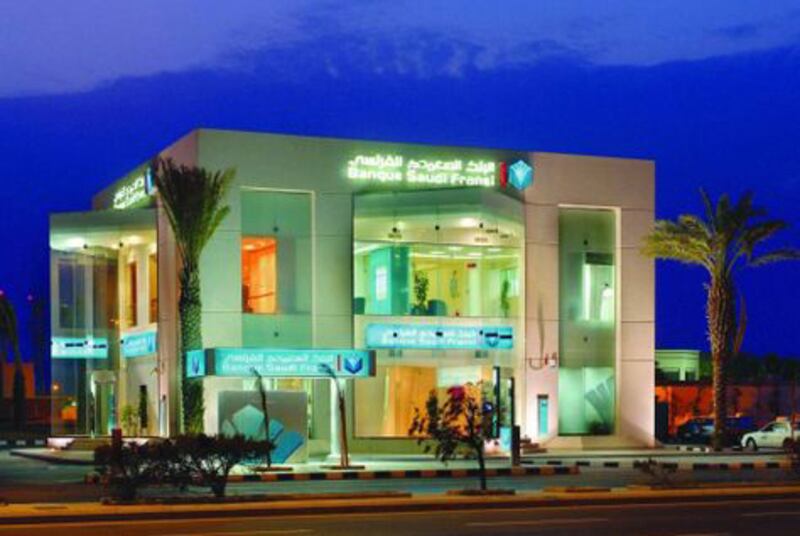The aggregate net profit of Saudi Arabia's 10 largest banks increased by 9.3 per cent on quarterly basis in the third quarter of this year, driven by higher interest rates and lower impairment charges, according to professional services consultancy Alvarez & Marsal.
The banks' cumulative net income for the three months to the end of September rose to 16.5 billion Saudi riyals ($4.4 billion), the consultancy said in its latest Saudi Arabia Banking Pulse report.
Total net interest income — what banks earn from their lending activities minus the interest they pay to depositors — grew almost 16 per cent in the July to September period from the previous quarter.
Impairment charges fell 15.4 per cent quarter-on-quarter, boosting banks' profitability along with higher interest income.
The Saudi Central Bank (Sama) has increased its interest rates by 1.5 per cent during the thrid quarter of this year in line with the US Federal Reserve to curb inflation, the report said.
"Overall, rising interest rates, improvement in asset quality and strong economic rebound are positives for the banking sector in Saudi Arabia," said Asad Ahmed, managing director and head of Middle East financial services at Alvarez & Marsal.
"The profitability growth is expected to continue for ... [the kingdom's] banks as the interest rate outlook remains in an upward trajectory.”
Sama this month raised its repurchase agreement (repo) rate by 0.75 of a percentage point to 4.5 per cent and its reverse repo rate by a similar margin to 4 per cent, “in line with its objective of maintaining monetary and financial stability”, it said at the time.
Inflation in the kingdom, the Arab world's largest economy, edged higher to 3.1 per cent in September on an annual basis. Consumer prices, which are relatively lower than most G20 economies, was driven by rising food and beverage prices, as well as increasing transport costs. The rise was higher than a 3 per cent increase recorded in September, Saudi Arabia’s General Authority for Statistics (Gastat) said.
Saudi Arabia's economy expanded 8.6 per cent in the third quarter of 2022, driven by higher oil prices and government reforms. Growth in three months to the end of September was up from the 6.8 per cent recorded a year ago, Gastat said.
Alvarez & Marsal's survey covered the kingdom's 10 largest listed banks: Saudi National Bank, Al Rajhi Bank, Riyad Bank, Saudi British Bank, Banque Saudi Fransi, Arab National Bank, Alinma Bank, Bank Albilad, Saudi Investment Bank and Bank Aljazira.
The lenders' aggregate loans and advances at the end of the third quarter increased by 2.9 per cent from the previous three-month period, whereas aggregate deposits grew at a much slower pace of 0.2 per cent.
The kingdom's banking sector’s aggregate net interest margin (NIM) expanded slightly as higher funding costs offset the improvement in credit yield, the report said. NIM improved marginally by 7 basis points to 3.05 per cent, supported by a rise in benchmark rates.
The consultancy said the overall asset quality of lenders improved as the non-performing loans ratio decreased to 1.5 per cent in the third quarter, down from 1.6 per cent in the second quarter.
The cost of risk also fell by 9 basis points due to a substantial drop in the aggregate impairment charges, it said.







